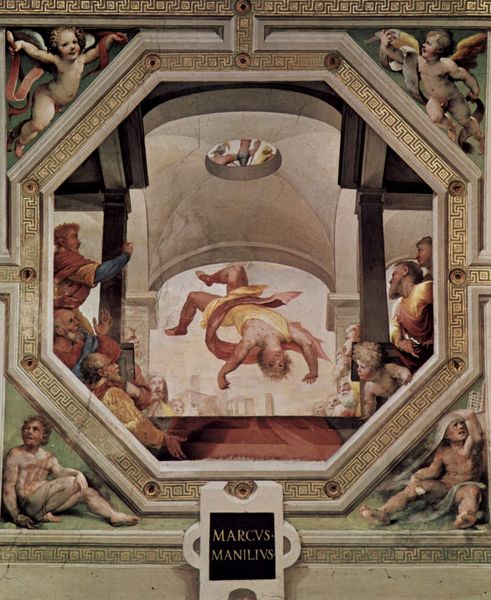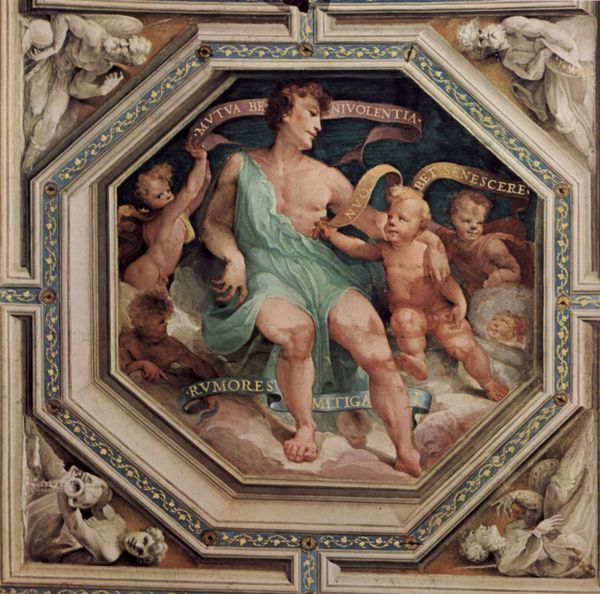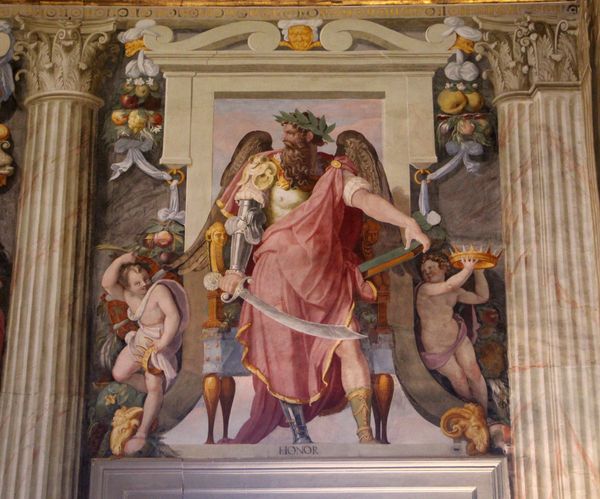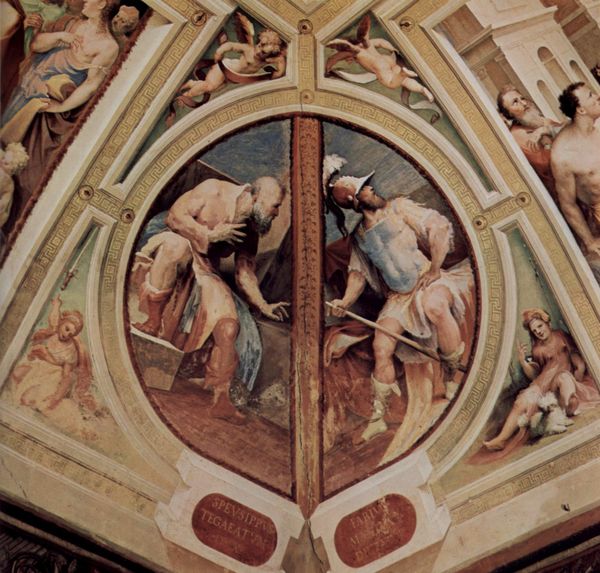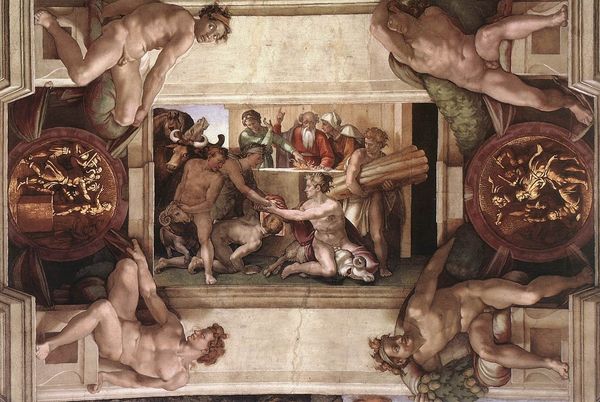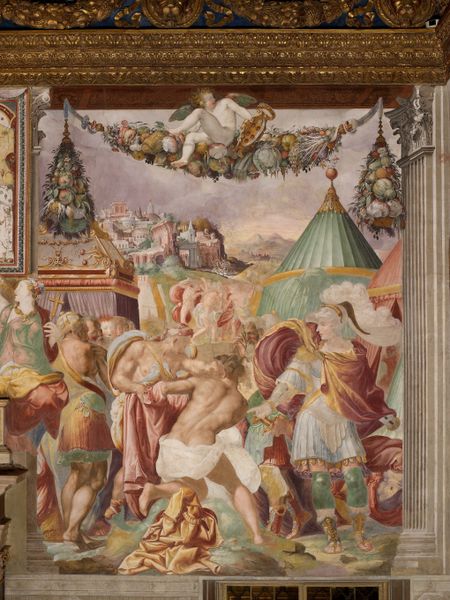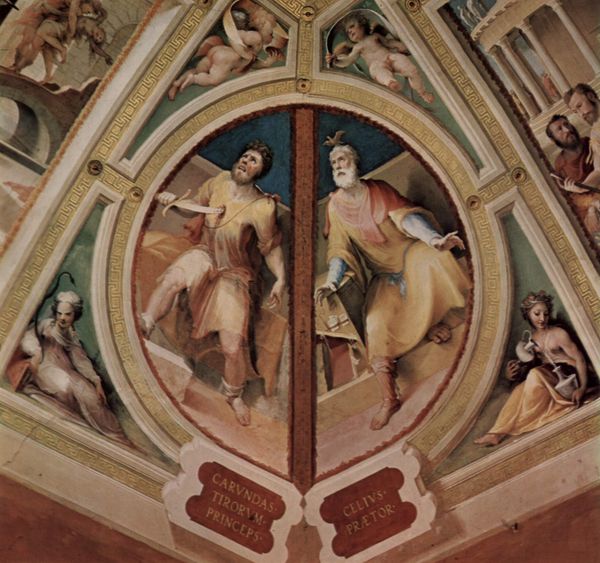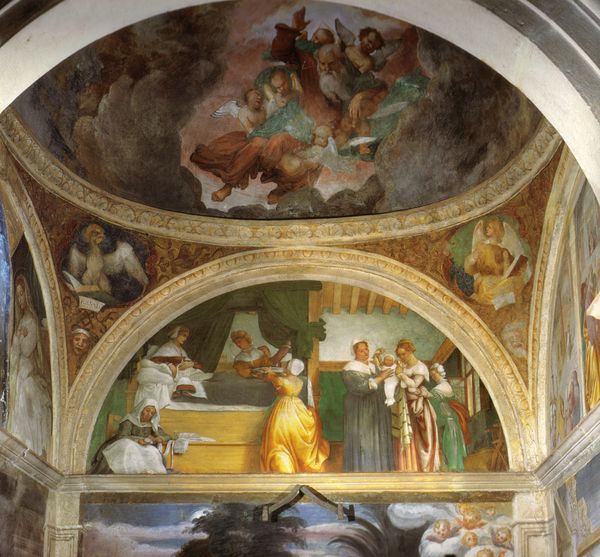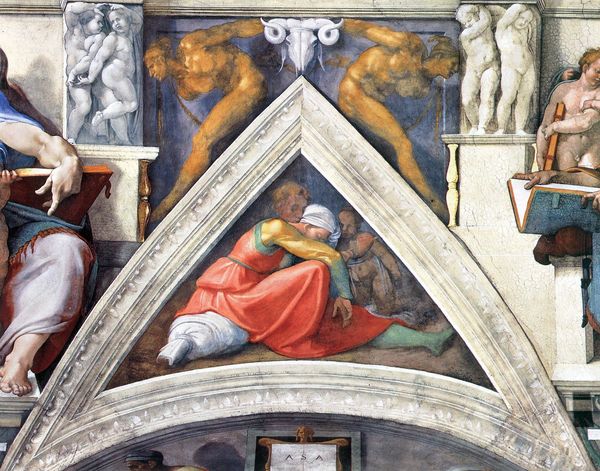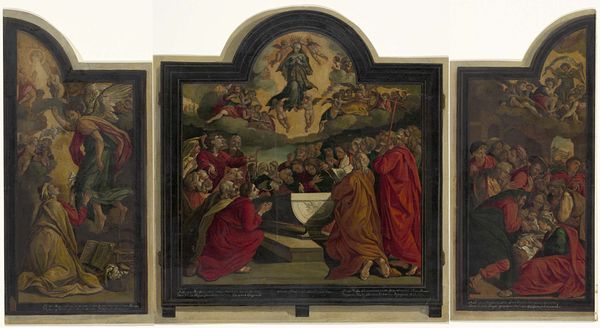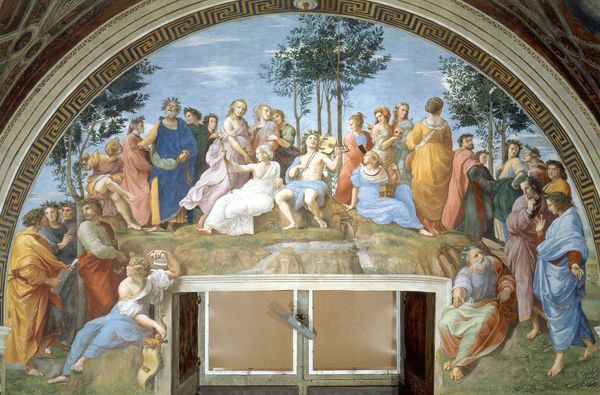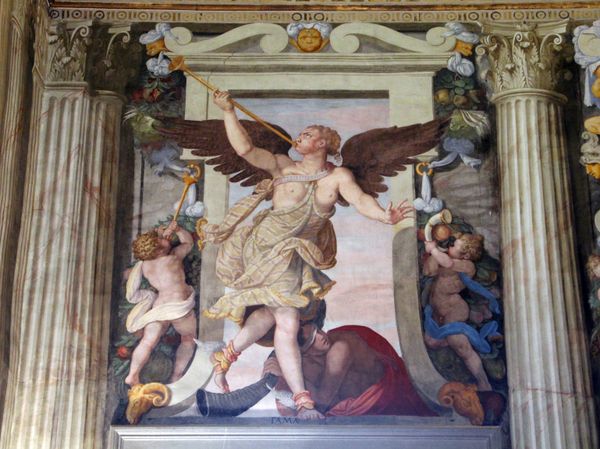
painting, fresco
#
portrait
#
high-renaissance
#
narrative-art
#
painting
#
sculpture
#
classical-realism
#
figuration
#
fresco
#
history-painting
#
academic-art
#
italian-renaissance
#
statue
Copyright: Public domain
Curator: Here we have Domenico Beccafumi's "Scene of Roman Justice" from 1535, a painting originally a fresco, capturing a particularly dramatic historical moment. What leaps out at you first? Editor: The theatricality, absolutely. All that intense action, frozen in time. It feels like a play frozen at its most heightened moment. Curator: Indeed. It has that High Renaissance grandeur about it, doesn't it? What's interesting to me is how Beccafumi, despite embracing that style, subtly undermines it. Notice how the composition is packed into this oddly-shaped octagonal frame, almost bursting at the seams. It disrupts the expected harmony. And look closely at the pigment, do you notice its application? Editor: There are layers, many thin layers with visible brushstrokes. The process is pretty demanding and requires skilled hands to achieve the overall design and depth effects. Curator: Precisely! You sense the labour, the physicality of its making. But getting back to that inherent drama, it really works with his treatment of color and light, doesn't it? The spotlight on the executioner and the stark contrast against the shadowed onlookers. Editor: The faces! I want to know what everyone's thinking, they almost steal the spotlight, like an ancient Greek chorus reacting to tragedy. What is he trying to convey about this moment in Roman history? Curator: Well, the inscription suggests the figures depicted may be Spurius Cassius, a consul of Rome in the 5th century BC, traditionally put to death for aspiring to be king. However, given that Beccafumi never definitively names the subject, it allows for greater interpretive liberty. Editor: This piece almost screams “power”. In a lot of figurative work during that period, particularly those done in fresco, that comes as no surprise since they commissioned a lot of them to represent stories with an allegorical representation of virtue. Curator: So while the scene is undeniably violent, maybe the intention was also to glorify, to send a very public moral lesson. Editor: It definitely is intense. I love that its materials still give it life even now, and that through its artifice we are still contemplating the very definition of “justice.” Curator: Beautifully put. Beccafumi captures that perennial tightrope we all walk as social creatures caught in the middle of right, wrong, and the ever-elusive notion of justice.
Comments
No comments
Be the first to comment and join the conversation on the ultimate creative platform.
